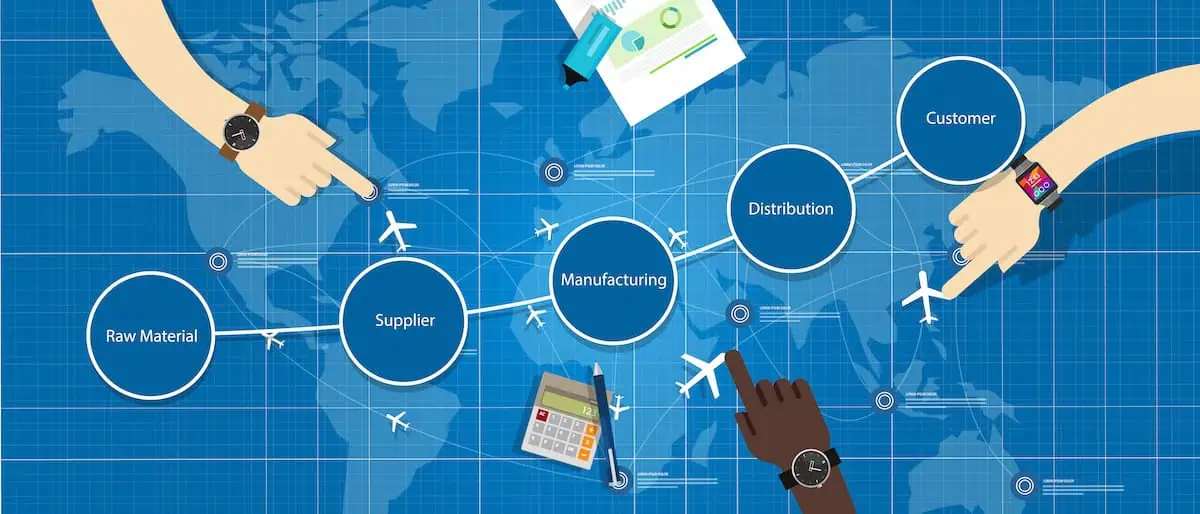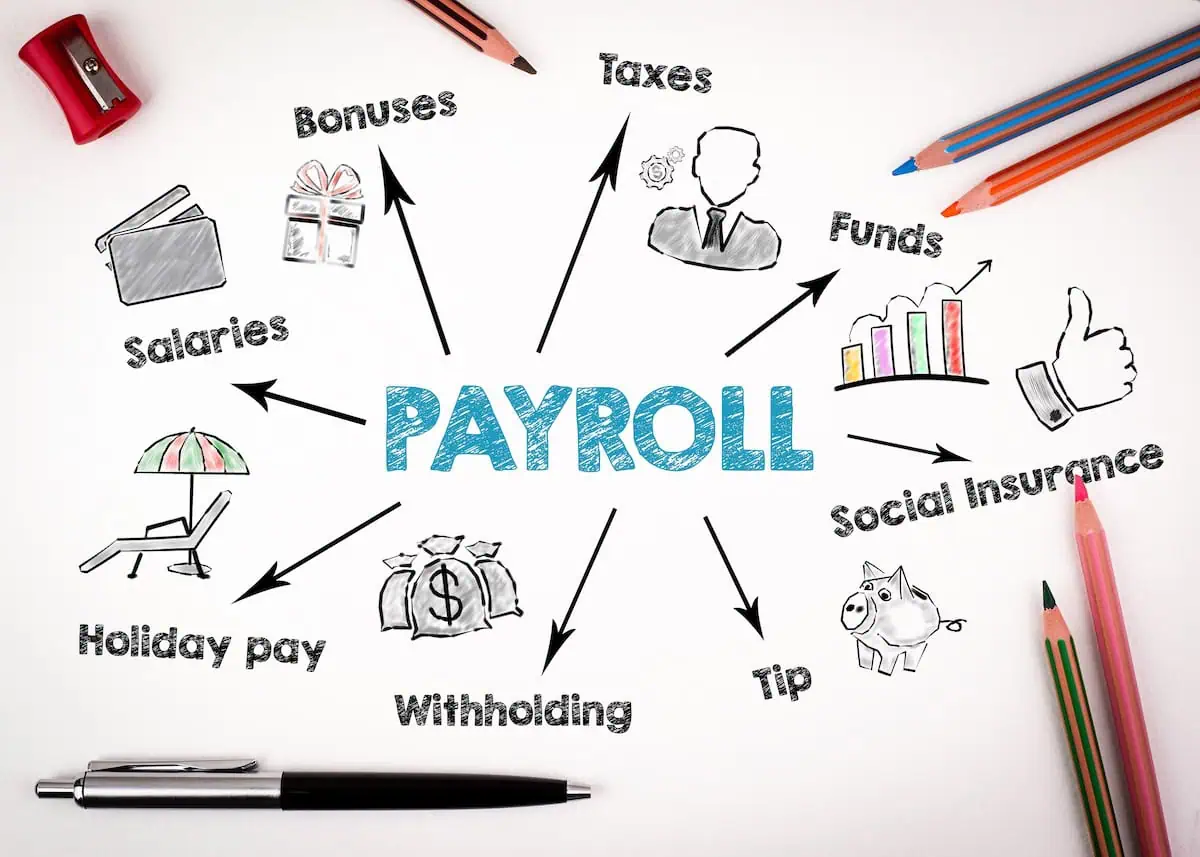In the complex ecosystem of modern business, the role of payroll services extends far beyond the mere disbursement of wages; it is a pivotal element that intersects significantly with supply chain management (SCM).
By embedding payroll systems within SCM, companies can unlock a host of efficiencies, from streamlined operations to improved compliance and enhanced data analytics.
That said, this guide aims to examine how payroll services can thoroughly transform supply chain management. It will explore the benefits and challenges of integration, offer insights into selecting the right payroll system, and provide actionable strategies for effective implementation.
What Are Payroll Services?
Payroll services encompass the administrative tasks involved in managing employee compensation in an organization. This includes the calculation of wages and salaries, tax filing, and the distribution of payments to employees.
Beyond simply ensuring that employees are paid accurately and on time, payroll services also handle the recording and reporting of payroll expenses to regulatory authorities, maintain detailed records for audit purposes, and often manage related employee data such as work hours, vacation and sick leave, and benefits administration.
Benefits Of Integrating Payroll Services In SCM
Integrating payroll services into SCM can deliver numerous benefits that enhance overall business efficiency and competitiveness. Here are some key advantages:
1. Cost Reduction
Integrating payroll with SCM can lead to significant cost savings. By streamlining payroll operations, businesses can reduce the overhead associated with separate systems and personnel dedicated solely to payroll functions.
Additionally, this integration can help identify overstaffing and underutilization of resources, allowing for more strategic workforce planning and deployment, which reduces unnecessary labor costs.
2. Improved Operational Efficiency
When payroll systems are integrated with SCM, the synchronization of data across platforms enhances the accuracy and speed of information flow. This results in quicker decision-making and more responsive management of the workforce, particularly in dynamic environments where supply chain demands can fluctuate rapidly.
For instance, adjusting staffing levels to meet production needs becomes more streamlined and effective.
3. Enhanced Regulatory Compliance
Payroll involves various compliance requirements, including wage laws, tax withholdings, and labor regulations. Integrating payroll with SCM allows for better oversight and management of these requirements across all supply chain activities.
This integration helps ensure that compliance is maintained consistently, reducing the risk of penalties and fines due to non-compliance.
4. Data-Driven Decision Making
With integrated payroll and SCM systems, businesses gain access to richer data analytics and reporting capabilities. This comprehensive data visibility can inform more strategic decisions regarding labor management, inventory control, and overall supply chain efficiency.
For example, you can analyze data on labor costs and outputs alongside other supply chain metrics to optimize human and material resources.
5. Increased Transparency And Accountability
Integration facilitates a more transparent view of operations and finances across departments. This visibility not only helps in identifying discrepancies and inefficiencies but also promotes accountability as it becomes easier to track the impact of specific actions or changes within the supply chain on payroll expenses.

Implementation Strategies
Implementing payroll services within SCM requires careful planning and strategic execution to ensure that the integration is effective and meets organizational objectives. Here are several key strategies for successfully implementing payroll services in SCM:
1. Assessment And Planning
The first step in integrating payroll services with SCM is to assess the current systems. This involves a detailed review to understand the capabilities and limitations of existing payroll process and SCM systems.
Key integration points where payroll data intersects with SCM processes, such as labor cost management and operational scheduling, need to be identified. It’s also crucial to define clear objectives for what the integration aims to achieve, such as payroll services cost reduction, improved efficiency, or enhanced compliance.
Establishing these goals upfront will guide the selection of technologies and the direction of implementation efforts.
2. Choosing The Right Payroll System
Choosing an appropriate payroll system is critical to successful integration. The selected system should be scalable and flexible to accommodate the growth of the business and adapt to changes in the supply chain. It must also be compatible with existing SCM software to ensure seamless data sharing and integration.
Additionally, the payroll software should offer specific features that support the integration goals, such as real-time tracking of labor costs and advanced analytics capabilities. These features are essential for extracting the maximum value from the integration, enabling more informed decision-making across departments.
3. Implementation Process
Implementing payroll integration should be managed using a structured project management approach. Assigning clear roles and responsibilities helps manage the payroll process effectively. We recommend a phased rollout of the integration to mitigate risks and allow for adjustments based on initial feedback from the system’s users.
Before full deployment, you should rigorously test the integrated system to ensure data accuracy and reliability. This step is vital to prevent any operational disruptions and to verify that all system components function cohesively.
4. Training And Support
Ensuring that both payroll and SCM teams are well-trained in the new integrated system is essential. Comprehensive training programs should cover all features of the new system and how to handle specific tasks within the integrated environment.
Additionally, ongoing support structures need to be established to resolve any issues promptly and to provide continuous assistance. This support is crucial for maintaining system efficiency and user confidence post-implementation.
5. Monitoring And Optimization
After integration, it’s essential to continuously monitor the system’s performance and its impact on SCM. Developing key performance indicators (KPIs) specific to the integration can help measure effectiveness and identify areas for improvement.
Regular system reviews and the use of feedback mechanisms allow for ongoing adjustments and optimization. This proactive approach ensures that the system remains aligned with business goals and adapts to any changes in the operational landscape.
6. Compliance And Security
Data security is paramount, especially when integrating systems that handle sensitive payroll information. Implementing robust security measures to protect data across systems is essential. The integration must also adhere to all relevant laws and regulations that affect payroll and SCM, ensuring compliance to avoid legal issues.
Regular compliance checks should be part of the routine to maintain standards and protect the organization from potential fines and reputational damage.
Technology And Innovations
The continual evolution of technology plays a crucial role in enhancing the effectiveness of payroll systems within SCM frameworks. Here’s how technology and innovations are reshaping this integration:
Emerging Technologies In Payroll And SCM
The advent of artificial intelligence (AI) and machine learning (ML) has revolutionized many aspects of business operations, including payroll and SCM. AI-driven algorithms can automate complex payroll calculations, ensuring accuracy and compliance with changing regulations while also adapting to variable elements like overtime and shift differentials.
In SCM, AI and ML enable predictive analytics, which helps forecast supply and demand trends, optimizing inventory and labor allocation accordingly.
Blockchain technology is another innovation that is making significant advancements in payroll and SCM. By facilitating secure, transparent transactions and maintaining an immutable record of all transactions, blockchain can streamline payroll processes and enhance trust and transparency in supplier relationships.
Real-Time Data Processing
Integration of Internet of Things (IoT) devices in SCM systems allows for the real-time collection and analysis of data directly from the production floor or during the logistics processes.
When this capability is combined with payroll systems, it can provide immediate insights into labor utilization and productivity, enabling more responsive workforce management and payroll adjustments. This real-time data processing supports dynamic decision-making that can adapt to changing operational conditions.
Advanced Analytics And Decision Support Systems
Enhanced data analytics tools are now capable of processing vast amounts of information to offer deeper insights into both payroll and SCM operations. These tools help identify patterns and anomalies that indicate inefficiencies or opportunities for cost savings.
For instance, analytics can show the impact of labor costs on overall supply chain expenses, guiding managers in making informed decisions about where to cut costs or invest more heavily.
Decision support systems (DSS) leverage this data to provide scenario-based analysis, helping executives see the potential outcomes of different strategic decisions. This can be especially useful in complex supply chains where decisions in one area, like payroll management, can have cascading effects throughout the supply chain.
Conclusion
The successful integration of payroll services into SCM not only streamlines operations but also positions companies with a more significant competitive advantage in the marketplace. It fosters a more agile, transparent, and efficient supply chain that can respond more effectively to the demands of a global and increasingly complex business environment.
Key Takeaways:
- Strategic Enhancement: Integrating payroll with SCM boosts operational efficiency and strategic decision-making through enhanced data use.
- Operational Efficiency: Synchronizing payroll and SCM systems improves real-time workforce management and streamlines decisions, especially under dynamic conditions.
- Comprehensive Benefits: The integration enhances transparency, reduces costs, and optimizes resource management, leading to more efficient business operations.
Article and permission to publish here provided by Claire Glassman. Originally written for Supply Chain Game Changer and published on April 24, 2024.
All images provided by Claire Glassman.

